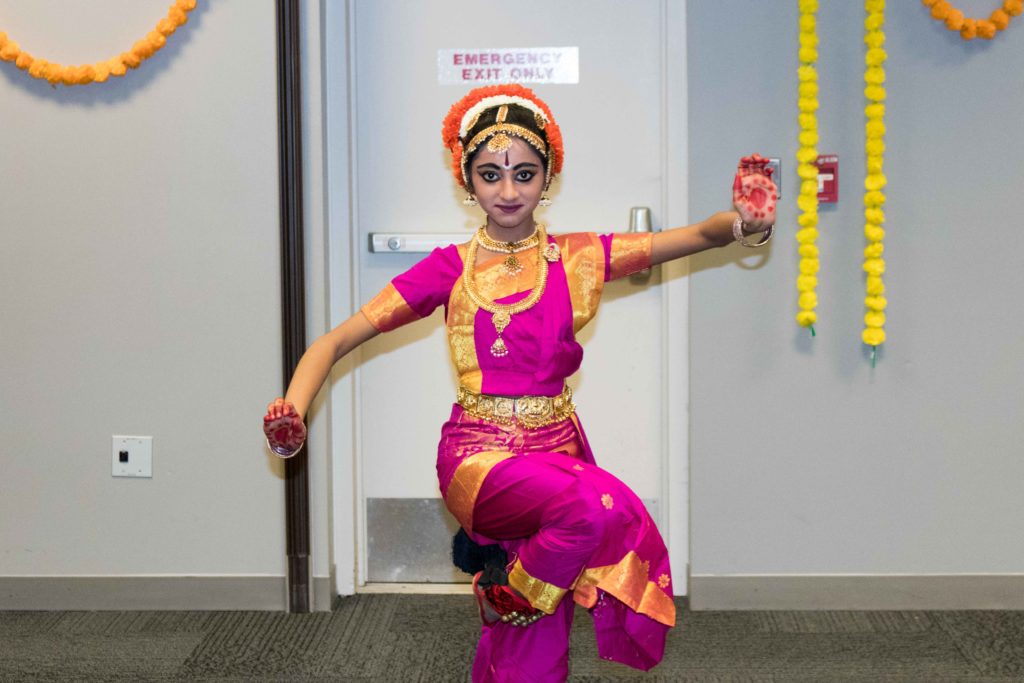Every year, the Diwali Festival of Lights is celebrated throughout Southeast Asia as a way of welcoming the new year. The festival, a commemoration of spiritual light overcoming darkness, takes place on Kartik Amavasya, (new moon day) the darkest night at the end of the Hindu lunar month, Ashvin, and the start of the month Kartika. Typically, the date falls between October and November. This year, it took place on Nov. 7.
For Avantika Bawa, WSU Vancouver associate professor of fine art, Diwali is a time for celebrating lightness and joy. She said for others, the celebration could means mediation and regrowth.
“The north and south celebrate it kind of differently” Bawa explained. “In essence, it’s the one time in the country where everyone kind of celebrates this. It is a two to three-day long holiday where people are repainting houses, remodeling and buying new upholstery.” As for the event, Diwali was celebrated on campus with a plethora of dances, food and henna tattoos.
Cougar Bites
An improvised take on Indian cuisine
With a mix of vegetables, curry and new spices, traditional Indian cuisine ignited taste buds at the WSU Vancouver Diwali Festival of Lights on Nov. 27. From the perspective of people who don’t eat Indian food often, Sydnie, The VanCougar photographer and I were excited to experience another culture’s tasty fare. We started with vegetable Kurma, a curry made with vegetables or meat along with coconut, spices and a nut or seed paste. Though we didn’t agree on this dish, due to Sydnie’s sensitive palate, I enjoyed it. I thought it was one of the most delicious foods we tried. From the chunky vegetables to the spicy sauce, Kurma now has a place on my Indian dishes in the future.
The crunchiest item on our plate was Khatta Meetha, a ready-to-eat dried snack with peanuts and rice flakes, amongst other ingredients. We both thought the crunchy snack was quite acidic and great for hiking, as it could easily be portable finger food, a perfect snack for a long hike.
Another flavor on our plate was vegetable Biryani, a mixed rice dish made with vegetables and eggs. Sydnie and I both thought that the dish was really tasty and complemented the other foods we had. It wasn’t spicy like some of the other foods we tasted, which was a nice break from the spices and went great with Naan, an oven-baked flatbread that directly translates to “bread” in Persian.

Sydnie and I agreed the best dish we had was the chicken Makhani, also known as butter chicken. We both thought the flavor profile and the texture of the chicken and sauce were delightful.
“I liked everything about it,” Sydnie said. “It was my favorite one for sure.”
Personally, I thought the sauce and chicken complemented each other nicely, but once we found out that Makhani directly translated to ‘butter’ we thought it was even better.
Saag paneer is a classic Indian curry, spinach, cheese and coconut milk dish that is made into a thick and creamy stew. Sydnie and I had opposite views about this dish too; I found it creamy and full of flavor, while Sydnie thought it was kind of bland and lacked flavor.
Pakora, a dish that consists of a mix of fried vegetables, was “fun” according to Sydnie and complemented the other dishes we ate. It was crunchy, flavorful and fried like all good foods are.

